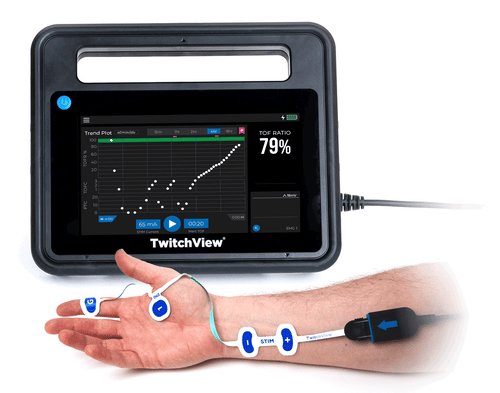Electrode Placement: The Foundation of Reliable Neuromuscular Monitoring

Key Insights
- Accurate electrode placement is essential for reliable EMG monitoring. Proper positioning significantly enhances data quality and device performance.
- Targeted education leads to meaningful improvements. Even brief training markedly increased placement accuracy and provider confidence.
- Confidence in EMG data is built on consistent technique. Correct placement fosters trust and supports broader clinical adoption.
The Challenge at Hand
Despite overwhelming evidence that quantitative neuromuscular monitoring improves patient outcomes, its adoption remains inconsistent in the U.S. and Europe. One major barrier is a lack of trust in monitoring devices. While no device is perfect, many inaccuracies in EMG-based devices can be traced back to improper electrode placement.
Ebert and colleagues set out to investigate whether an educational intervention focused on electrode placement could improve anesthesia providers’ confidence in EMG data. Their findings highlight the importance of this often-overlooked aspect of quantitative monitoring.
How the Study Was Conducted
The researchers developed a scoring system to evaluate ideal electrode placement. They assessed two key factors:

- Proximity to the Wrist Crease: Electrodes were scored 1-3, with 1 being ideal placement (close to the wrist crease), 2 indicating moderate deviation (2-5 cm away), and 3 representing significant deviation (further up the forearm).
- Alignment Within the Ulnar Groove: A score of 1 meant perfect alignment, 2 indicated one electrode outside the groove, and 3 meant both electrodes were misplaced.
Additionally, anesthesia providers rated their confidence in the EMG data after each case using a simple 1-3 scale:
1: Highly confident in the correlation between EMG data and drug dosing.
2: Moderately confident.
3: Low confidence.
After collecting data from 50 cases, the team conducted an educational intervention. This session included examples of correct versus incorrect electrode placements and reinforced best practices. Following the training, every participant expressed confidence in their ability to place electrodes correctly.
From Uncertainty to Confidence
The results were striking:
Ulnar Groove Placement: Perfect placement improved from 74.5% (41/55) before education to 95% (57/60) afterward (P = 0.003).
Wrist Crease Placement: Accuracy jumped from 61.8% (34/55) to 96.7% (58/60) post-education (P < 0.001)

The study also revealed a significant correlation (P < 0.01) between correct electrode placement and anesthesia providers’ trust in the EMG data.
The Real Impact
This study highlights a simple yet powerful truth: proper electrode placement is not just a technical detail—it’s the key to reliable quantitative neuromuscular monitoring.
As Ebert and colleagues demonstrate, a small educational effort can yield substantial returns in both accuracy and trust. For those of us championing quantitative neuromuscular monitoring this is a call to action: we must prioritize training and ensure that everyone using an EMG based quantitative monitor knows the importance of electrode placement.
- Ebert, M. T., Szpernal, J., Vogt, J. A., Lien, C. A., & Ebert, T. J. (2024). Improving quantitative neuromuscular monitoring: an education initiative on stimulating electrode placement. Journal of clinical monitoring and computing, 10.1007/s10877-024-01227-1. Advance online publication. https://doi.org/10.1007/s10877-024-01227-1




